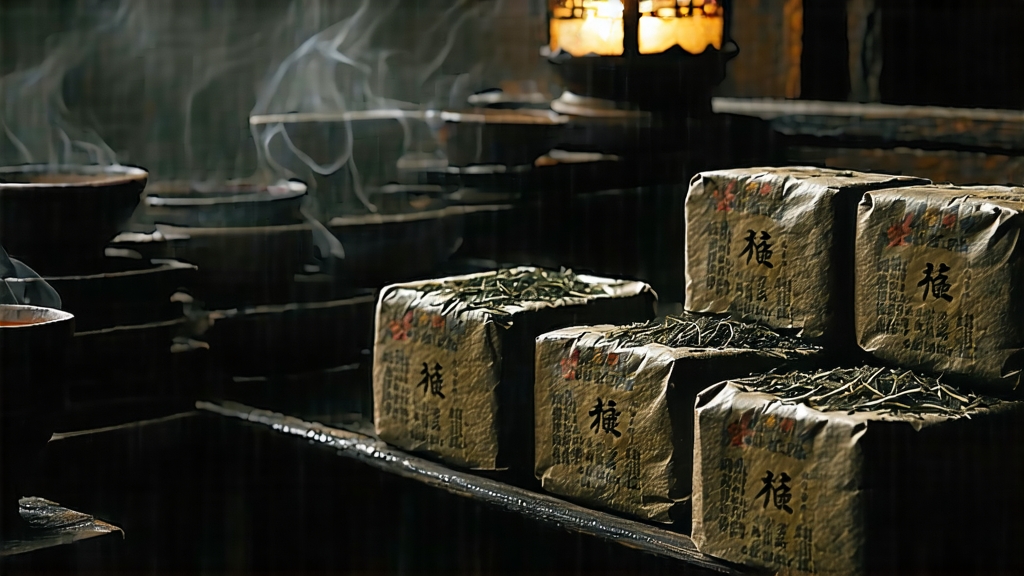
Tucked away in the humid mountains of southern Guangxi, Liu Bao tea has spent four centuries quietly fermenting its own legend. To international drinkers it is still the least famous of China’s dark teas, yet within the walls of old tea houses from Kuala Lumpur to Guangzhou it is spoken of with the reverence normally reserved for grand cru Burgundy. What follows is a complete journey through that legend—its birth in war and trade, its microbe-driven metamorphosis, and the ritual codes that unlock its deep, betel-nut sweetness in your own kitchen.
-
Historical footprints
The name “Liu Bao” simply means “six fortresses,” a cluster of hamlets in Wuzhou prefecture that served as riverine depots on the trade route between the tea-rich interior and the port of Guangzhou. During the Qing dynasty, imperial soldiers stationed in the region were paid partly in compressed tea bricks because the leaf was lighter to transport than rice and did not spoil in the subtropical heat. By the late 1600s Cantonese merchants had discovered that the same bricks, after months on swaying bamboo rafts down the Xun River, arrived in Southeast Asia darker, mellower, and suddenly worth twice the price. Thus an accident of logistics became a deliberate art: tea was made to travel, and travel made the tea. -
From leaf to dark gold
Liu Bao belongs to the “hou fāxiāo” (post-fermentation) family. Yet unlike Yunnan’s shou Pu’er, which was invented in 1973, Liu Bao’s wet-pile technique has been continuous since the Ming period. The process begins in early May when the pluck standard is one bud with the third or fourth leaf—mature, waxy, and rich in pectin. After a brief indoor withering the leaves are roasted in a wok at 200 °C for exactly three minutes, hot enough to kill green enzymes but gentle enough to keep the stems pliable. Rolling follows, 40 minutes of alternating pressure and release that bruises the cell walls without breaking them. Then comes the “duī wò” (heap-fermentation), the critical step that gives Liu Bao its soul. The leaves are piled 70 cm high inside a bamboo-lined chamber, sprayed with mineral-rich mountain water, and covered with hemp sacks. Inside this 60 °C compost-like core a microbial city blooms: Aspergillus niger, Blastobotrys adeninivorans, and a dominant yeast Cyberlindnera jadinii unique to Liu Bao. Every 48 hours the pile is turned by barefoot workers who judge readiness by aroma—first grassy, then like cooked rice, finally the signature betel-nut note. After 10–15 days the tea is basket-fired over lychee wood, lowering moisture to 12 %, then steamed and pressed into 500 g bricks or 40 kg bamboo-bound logs. The logs, still warm, are carried into limestone caves where relative humidity hovers at 85 % year-round. There the tea hibernates for a minimum of three years, often thirty, breathing the cave air and slowly oxidizing its catechins into theaflavins and theabrownins. -
Variations within the darkness
Purists recognize three micro-categories. “Chuan Liu” (tradition Liu) is the cave-aged original, wrapped in palm leaf and bamboo skin, yielding a liquor the color of blackstrap molasses. “Shāng Chuán” (merchant tradition) is the same leaf but stored in above-ground teak warehouses in Kuala Lumpur where the tropical climate accelerates fermentation, producing a brighter red cup with hints of dried longan. Finally “Qīng Piàn” (green slice) is an accidental style discovered when a 1950s consignment was forgotten before wet-piling; the semi-fermented leaf developed a striped appearance and a lighter, orchid-like fragrance prized by Taiwanese collectors. -
Brewing: the Malaysian coffee-shop method
While gongfu ceremony works, old-timers in Penang insist on the “kopi tiam” approach that mirrors the tea’s working-class roots. You will need a small enamel kettle, a porcelain cup with saucer, and 6 g of 15-year-old Liu Bao. Bring 200 ml of soft water to a rolling boil, rinse the leaf for five seconds,